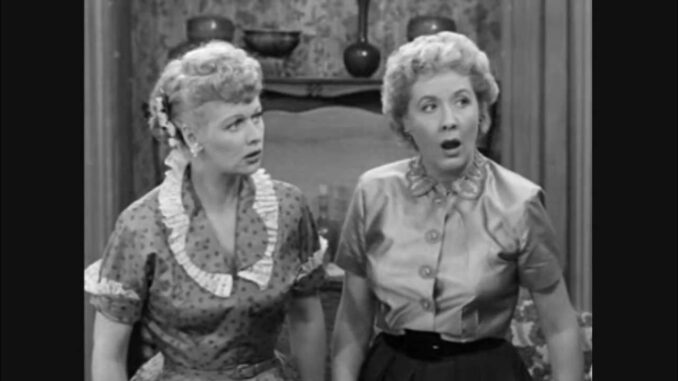
In a world of ever-changing media trends and streaming services, CBS has found a way to mix nostalgia with innovation by colorizing classic episodes of I Love Lucy. As part of their May sweeps tryout, this move has sparked excitement and intrigue among long-time fans and new viewers alike. But what makes this decision so significant, and why is CBS banking on this colorful reboot?
Let’s dive into the details of why CBS is reviving these iconic black-and-white episodes and what the impact could be on today’s viewing landscape.
Why CBS Chose ‘I Love Lucy’ for a May Sweeps Tryout
When it comes to TV classics, I Love Lucy stands in a league of its own. The beloved sitcom, originally aired from 1951 to 1957, has been a constant in reruns for decades. The characters of Lucy, Ricky, Ethel, and Fred have left an indelible mark on pop culture. So, why did CBS decide to bring this 1950s staple back to life, especially now?
The answer lies in two key factors: nostalgia and innovation. With TV audiences increasingly seeking comfort content and familiar faces, I Love Lucy presents a perfect opportunity to capture both seasoned viewers and a younger generation that may have only heard of the show from their parents or grandparents.
The Power of Nostalgia: Why Viewers Crave Classic TV
Nostalgia plays a powerful role in entertainment. Shows from decades past often evoke feelings of comfort and joy, reminding viewers of simpler times. I Love Lucy represents a golden age of television when family sitcoms dominated the airwaves, and humor was lighthearted and universal.
By colorizing these old episodes, CBS hopes to tap into this nostalgia while also making the show more visually appealing to modern audiences who are used to vibrant HD visuals.
Colorization: Bringing Classic TV into the Modern Era

One of the biggest challenges in reviving black-and-white content is making it palatable for contemporary viewers. In the age of 4K and ultra-high-definition screens, many younger viewers find monochrome programming dull or outdated. Enter colorization.
The process of colorizing old black-and-white films and TV shows is not new, but it has become more sophisticated in recent years. By carefully selecting colors that would have been appropriate for the time, CBS is able to maintain the authenticity of I Love Lucy while adding a fresh, colorful twist.
How Colorization Works: The Technology Behind the Transformation
Colorization is no easy feat. It involves a team of artists and technicians working meticulously to add layers of color to each frame of an episode. Using both historical research and modern digital technology, these professionals recreate what the colors of the sets, costumes, and lighting would have looked like if the show had originally been filmed in color.
This painstaking process not only adds vibrancy to the episodes but also gives viewers a new perspective on the show’s intricate set designs and costume details that were previously hidden in black and white.
The Impact of Colorized Episodes on Viewer Ratings
CBS’ decision to air colorized episodes of I Love Lucy during May sweeps is no accident. May sweeps is a critical period for TV networks, as it helps determine advertising rates based on viewership. By airing colorized versions of a beloved show, CBS is hoping to draw in both long-time fans and curious new viewers, potentially boosting their ratings.
Targeting a New Audience: Millennials and Gen Z
While the original I Love Lucy fans are mostly from older generations, CBS is also aiming to attract younger viewers. Millennials and Gen Z, who may have only seen the show in passing, are more likely to be intrigued by the colorized episodes. The colorful visuals may help make the show feel more modern and accessible, bridging the gap between classic TV and today’s binge-watching culture.
Will Colorized ‘I Love Lucy’ Episodes Go Viral on Social Media?
In today’s media landscape, going viral can make or break a show’s success. With the right promotional strategy, CBS could easily spark interest on social media platforms like TikTok, Instagram, and Twitter. Memorable clips from the colorized episodes could become viral content, capturing the attention of a generation that thrives on short, sharable media.
The Legacy of ‘I Love Lucy’ and Its Cultural Impact

The decision to revive I Love Lucy isn’t just about ratings; it’s about celebrating the cultural significance of the show. I Love Lucy was groundbreaking in many ways: it was one of the first TV shows to be filmed in front of a live studio audience, and it portrayed a strong, comedic female lead in a time when that was far from the norm.
Lucille Ball’s Timeless Humor: Still Relevant Today
Lucille Ball’s comedic genius is timeless. Her physical comedy, quick wit, and impeccable timing have stood the test of time, making I Love Lucy just as funny today as it was in the 1950s. By adding color to her performances, CBS is highlighting the universal appeal of her humor and ensuring that it resonates with a whole new generation.
The Role of Desi Arnaz in TV Innovation
Desi Arnaz, who played Ricky Ricardo, wasn’t just an actor on the show; he was also a visionary producer. His innovations, such as the use of multiple cameras and filming in front of a live audience, revolutionized TV production. The decision to colorize the show is another nod to his forward-thinking legacy.
CBS’ Strategy: Reviving Classics for Modern Audiences
This isn’t the first time CBS has tried to bring classic TV back into the limelight. Over the years, they’ve experimented with airing colorized episodes of other classic shows, but I Love Lucy holds a special place in their lineup due to its massive popularity and cultural significance.
Other Shows That Have Been Colorized
I Love Lucy isn’t the only show to get the colorization treatment. Shows like The Andy Griffith Show and The Twilight Zone have also been given a similar makeover. However, none have the same level of cultural impact as I Love Lucy, making this revival particularly exciting for CBS and its audience.
How CBS Could Benefit Financially from the Colorization
With ad revenue closely tied to viewership, CBS stands to benefit significantly if the colorized episodes perform well during the May sweeps. If successful, this could lead to further colorization of other classic episodes or even other beloved shows in CBS’ archives.
Will Colorization Become a Trend for Other Networks?
If CBS’ experiment with colorizing I Love Lucy pays off, other networks may follow suit. Classic TV shows from the 1950s and 1960s are plentiful, and colorizing them could offer a fresh way to reintroduce these shows to a modern audience.
What Fans Are Saying About the Colorized Episodes
While many fans are excited about the prospect of seeing their favorite I Love Lucy episodes in color, others are more skeptical. Purists argue that the show was meant to be seen in black and white, and that adding color could take away from its original charm. However, the general consensus seems to be one of curiosity and anticipation.
Conclusion: CBS’ Bold Move to Bring Back ‘I Love Lucy’ in Color
By dusting off I Love Lucy and giving it a colorful makeover, CBS is taking a calculated risk to both honor the show’s legacy and appeal to a modern audience. Whether this gamble pays off during May sweeps remains to be seen, but one thing is clear: I Love Lucy’s charm is as strong as ever, and the addition of color could only enhance its appeal.
